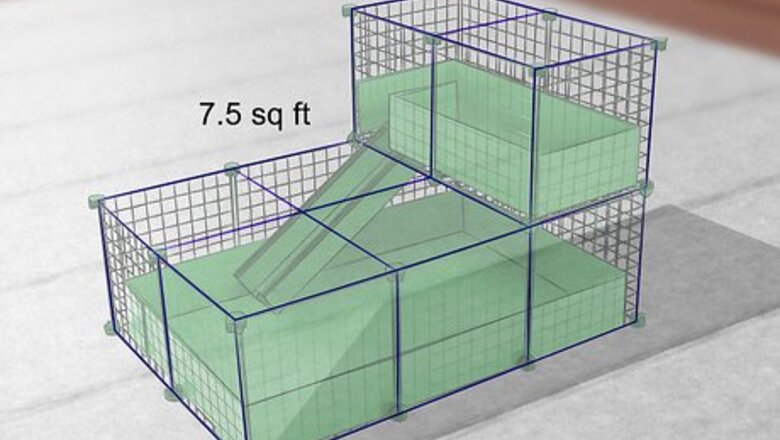
views
Choosing a Cage

Consider the size of the cage. Two female guinea pigs will need a cage that is at least 7.5 square feet. From there, multiply the number of guinea pigs by four to determine how many square feet you will need (i.e., 3 guinea pigs will require 12 square feet). Male guinea pigs should be given an additional four square feet to minimize fighting. The bigger the cage the better! Guinea pigs love running around (often called zoomies) and popcorning. They can't do this in a tiny amount of space. A large cage is essential for play and exercise.
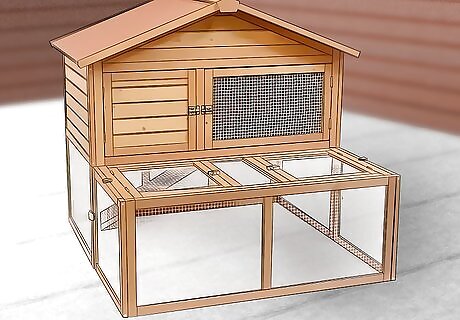
Consider purchasing a hutch. Hutches are generally suited for outdoor exposure. You can purchase a simple one-story hutch with an opening and built-in indoor section, or choose a two-story hutch with a ramp. A two-story hutch will likely provide more room, but they are still limited. Hutches that expand outwards should also be considered.
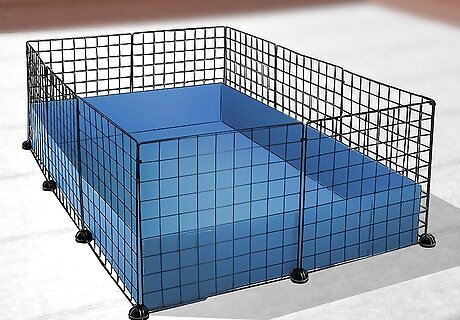
Consider purchasing a cubes and coroplast cage (or C & C). C & C cages cannot be kept outdoors and must be positioned indoors due to their minimal security and lack of protection from weather elements. C & C cages are increasingly popular among guinea pig owners due to its large sizing, simple DIY, cheap material, and easy expansion and access. If you'd like an indoor guinea pig, a C & C cage would be most suitable.
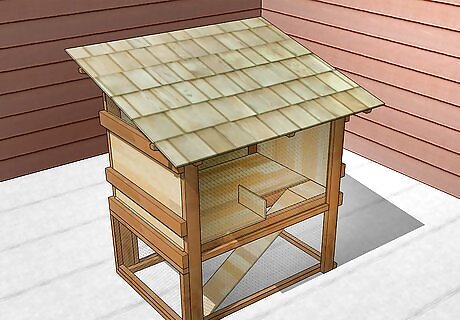
Consider purchasing a chicken coop. Chicken coops are similar to guinea pig or rabbit hutches with the exception that they are often larger in order to accommodate for a full flock of chickens. Some have attached runs to enable your guinea pig access to the lawn, which is even better.
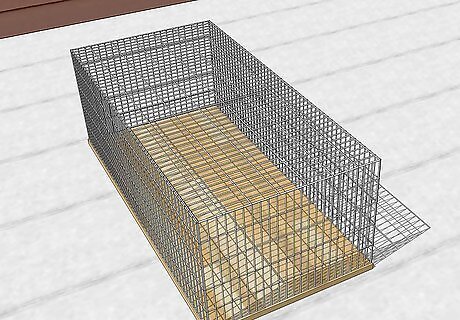
Consider purchasing a wire cage. Wire cages offer satisfactory indoor use, however, don't fall into the marketing trap of purchasing a cage that's too small for your guinea pig. You will need a cage that is at least 7.5 square feet for two guinea pigs. Do not purchase a wire cage that has a wire bottom. Guinea pigs have sensitive feet that are susceptible to bumble foot, which are often caused by wire flooring. Don't buy a wire cage that is designed for mice, rats, or hamsters. Guinea pigs have completely different housing requirements to these smaller rodents and cannot withstand the same living conditions.
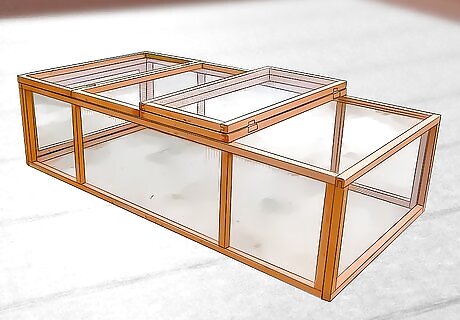
Consider purchasing a guinea pig or rabbit run. Runs provide plenty of beneficial space, however, they aren't the safest to use outdoors as they offer minimal protection or coverage from predators and harsh weather conditions. A run is best used for guinea pigs during warm weather to provide exercise and enrichment to your guinea pig under supervision. Runs can often be attached to hutches or coops to offer more space.

Do not fall for flimsy pet store cages. Many pet stores tend to market cages to their customers that are unsuitable and too small for a guinea pig to live in. Most pet store cages don't meet the minimal space requirements of 7.5 square feet and are primarily designed for smaller rodents, such as a mice and hamsters.
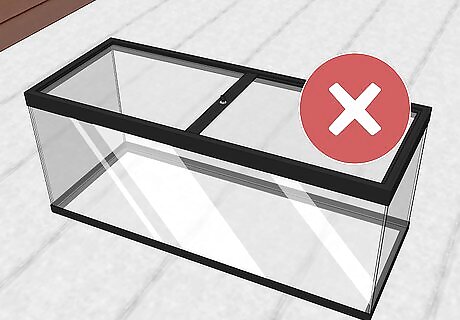
Refrain from purchasing an aquarium or glass tank. Aquariums were once a popular option from those who don't put in the time to research the the housing requirements for guinea pigs. However, glass tanks do not allow for proper air circulation or provide enough space, therefore are heavily frowned upon.
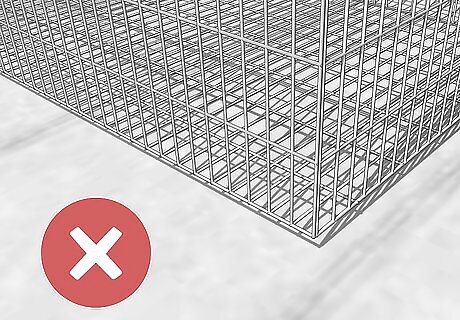
Don't purchase a cage with a wire bottom. Select a cage with a flat and solid bottom instead. Because guinea pigs have sensitive feet, cages with wire bottoms have a high risk of causing bumble feet, a type of foot infection caused by abrasive surfaces.
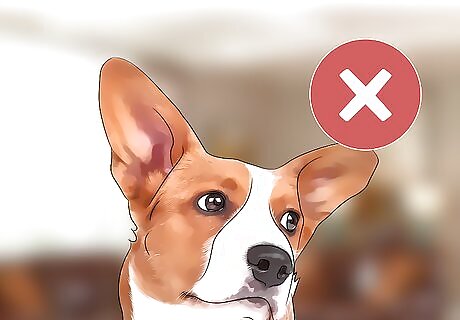
Make sure your guinea pig's home is predator proof. If there are cats or dogs present in your home, or other wild predators within the outdoor area, it's your job to ensure that your guinea pig's cage is safe and secure. Make sure that there are locks on the doors of your guinea pig's cage, a sturdy roof, solid floor, and that the cage is made of strong material, such as wood or metal. A wire or C & C cage will not suffice outdoors. They aren't stable and don't provide protection from predators.
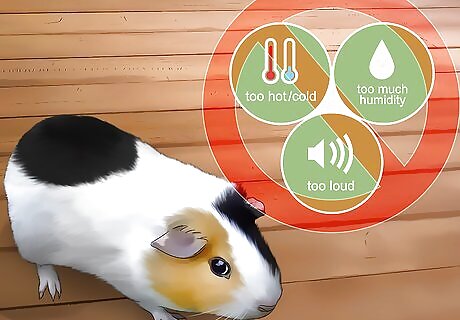
Place the cage in a satisfactory location. If you live in a region that experiences unpredictable weather patterns and fluctuating changes in temperature, it's advised to keep your guinea pigs indoors. Otherwise, keep an indoor cage for your guinea pig to stay when the cold or hot months peak. Guinea pigs are sensitive to temperature, therefore it's important to ensure that they are kept in a stable environment. Ideally, your guinea pigs should be kept in a room that is approximately 65-75 degrees Fahrenheit. Guinea pigs don't do well in humid locations, such as sheds and garages. Humidity encourages bacteria to grow, especially fungal infection. Because guinea pigs have sensitive hearing, they shouldn't be placed in an area that is prone to loud noise, such as beside a television or stereo system. If you have young children, place your guinea pig's cage in a room where you can monitor them and supervise any small children at the same time.

Purchase a suitable ramp for your cage. If you're purchasing a cage that is multiple story, such as a hutch or coop, ensure that the ramp you acquire is suitable for your guinea pig's stature. Select a ramp that features soft sandpaper and juts to ensure good grip, and avoid ramps that are too steep for your guinea pigs to climb.
Selecting Your Bedding
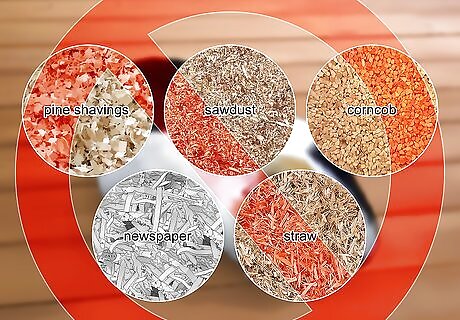
Steer clear of toxic materials. There are several types of bedding choices to choose from. With that being said, there are also multiple commercially marketed bedding for small animals that may harm them. Never use cedar or pine shavings. These types of wood are toxic to guinea pigs and can cause serious respiratory issues. The oils in them can get stuck in your guinea pig's lungs. However, pine can be used as long as it's kiln-dried and dust-extracted. Never use sawdust. The dust inhaled from sawdust can cause similar respiratory issues to that of cedar and pine shavings. Never use corncob bedding. Due to it's abrasive texture, corncob can harm your guinea pig's sensitive feet and cause them to develop bumblefoot, a type of bacterial infection. This type of bedding also has the tendency to mold. Never use newspaper. Newspaper is a great material to line at the bottom of the cage to catch urine leaks. However, it isn't absorbent enough to use alone. Never use straw. Unlike hay, straw is of a tough consistency that can easily poke or harm your guinea pig's eye. It isn't absorbent enough to be used as their main bedding.

Be aware of the mixed reviews on wood shavings. Some veterinarians will advise to avoid wood shavings, as the volatile oils and dust present in these materials can cause health issues, such as dry skin, eye irritation, and respiratory infection. Providing that you seek a safe wood material that is dust-extracted, kiln-dried, and you air it out for several days, wood shavings will not cause long-term harm.
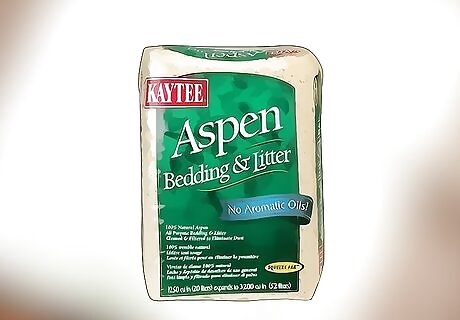
Consider using aspen wood shavings. Aspen is dissimilar to other forms of wood shavings, such as pine, as they aren't aromatic. Of course, you should also look for packaging that is specifically labelled as dust-extracted, regardless of the type of wood you use.
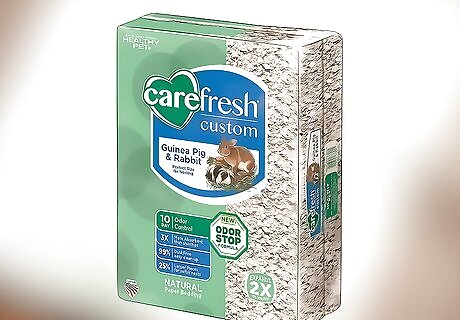
Consider using CareFresh. CareFresh is a paper-based bedding that is made from reclaimed pulp fibres and paper waste. The bedding is processed to remove harmful aromatic hydrocarbons that exist in pine and cedar oils. Choose their all-natural bedding in favour of their coloured or scented range.
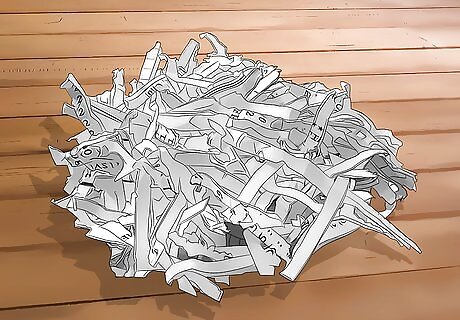
Consider using paper bedding. Shredded paper can be purchased from pet stores or you can shred your own at a relatively low cost. Because paper is void of toxins or aromatic hydrocarbons and oils, they are a safe material to use. However, bedding has a low absorbency and cause the smell of urine to linger, requiring frequent changing.
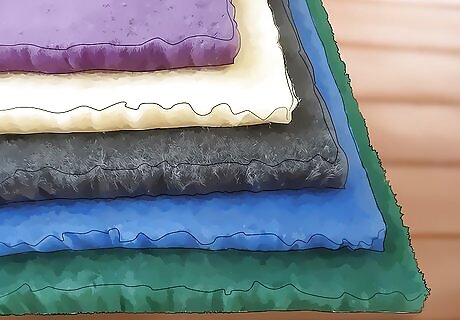
Consider using fleece. Fleece is a popular choice of bedding among indoor cages, such as C & C cages, as they are soft and safe to use. Special fleece blankets that are designed for small pets can be purchased online or at your local pet store. Fleece blankets will require a more regular maintenance in order to keep clean. Spot-cleaning is especially important.
Buying Essential Products
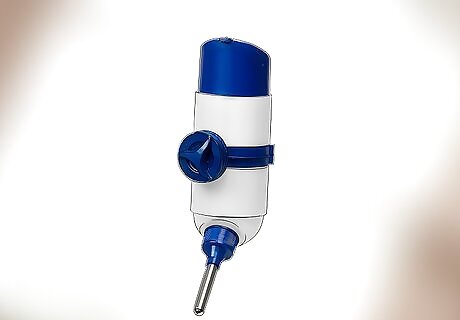
Purchase a water bottle. A 12 oz (350ml) bottle will provide enough water for a single guinea pig for three days. Seek recommendations for a non-leak water bottle that's suitable for small animals. Alternatively, you can use a water bowl instead of a bottle. However, water bowls attract mess and dirt because they aren't an enclosed container. Your guinea pig might also knock the bowl over, creating a large spill over the cage.
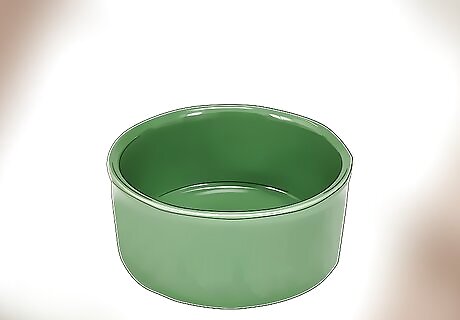
Purchase a food bowl. You will likely need two food dishes; one for your guinea pig's pellets and another for their fresh fruit and vegetables. Purchase a bowl made of a heavy-weight material, such as ceramic, rather than plastic. Ceramic bowls are sturdy, chew-resistant, and difficult to overturn. Your bowls will need to be big enough to hold 1/4 cup of pellets and one cup of vegetables. If you have two guinea pigs (or more), you will likely need to have two of each dish to prevent territorial disputes.

Purchase multiple hideouts for your guinea pig. Being prey animals, guinea pigs are easily scared by their surroundings. Providing multiple hideouts for your guinea pig, such as huts, bridges, and shelters, will lessen stress levels within the cage.
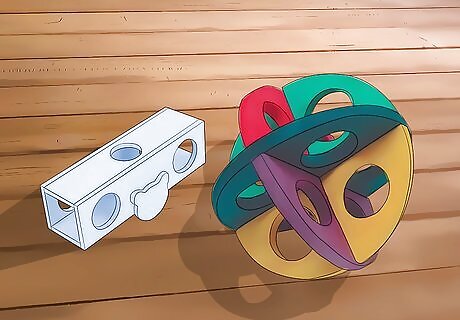
Purchase cage toys. Toys offer stimulation and enrichment, which are important in reducing boredom and encouraging play and exercise. Consider toys like igloos, tunnels, bridges, wood blocks, hammocks, cosies, hay stuffers, and treat balls. Don't buy wood toys that splinter, wire balls, or any toys that are a choking hazard. Especially avoid exercise wheels or balls. These toys have been proven to be harmful to your guinea pig's spine, and hardly promote exercise.
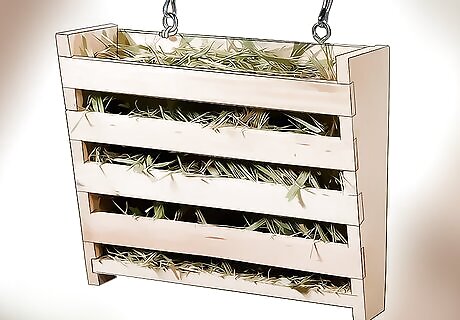
Consider buying a hay rack. Hay racks can help bundle the hay together and encourage feeding, however, they should not be a replacement for free-feeding hay. Choose a hay rack that is made of a safe material, such as wood, as opposed to wire hay racks that put your guinea pig at risk of getting their head and bodies stuck between the metal bars. Alternatively, you can place your hay in a shallow litter tray to keep it all in one place.
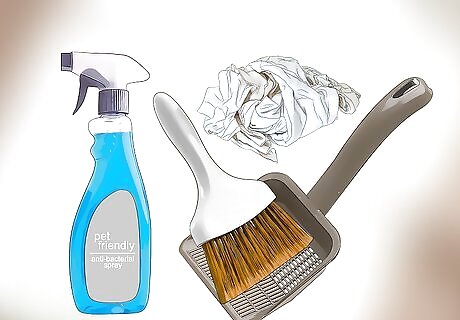
Purchase cleaning products. Guinea pigs need their cages cleaned at least once a week, and sometimes daily if you decide to spot-clean. You will need a brush, dustpan, cloth, gloves, pet-friendly antibacterial spray, a scooper, and bin bags.
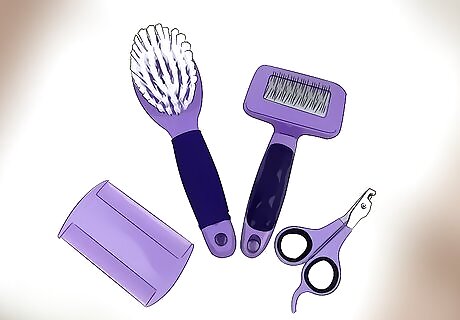
Purchase optional grooming products. While grooming products aren't necessary for short-haired guinea pigs, they are beneficial for owners of long-haired breeds, such as Peruvians and Shelties. Acquire a few grooming supplies, like a soft-bristled brush, hair clippers, and nail-trimmers.
Setting Up a Hutch
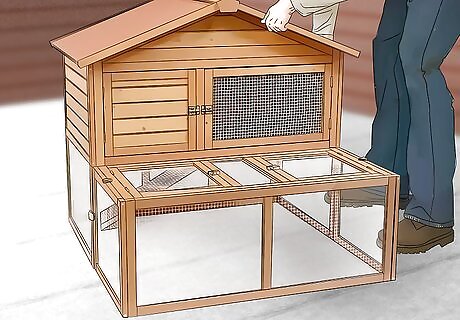
Assemble your guinea pig hutch. Hutches are fairly easy to assemble providing you have the instructions and all the parts to it. You will likely need some tools to help assemble the hutch.
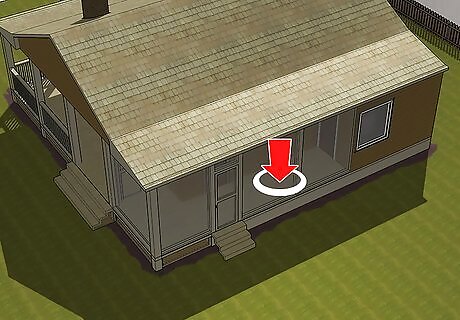
Place the hutch in a suitable location. Anywhere that is visible and protected by weathering elements will suffice. Preferably, you should keep the hutch out of direct sunlight in an area that is well-ventilated and secure from predators and other household pets. An example of a suitable location for a guinea pig hutch would be under a sheltered area, like a veranda. This way, your guinea pigs will be protected from the atmosphere and harsh weather. Guinea pigs don’t do well under humid conditions, such as a shed or garage. Dampness promotes the growth of mould in their hay and bedding and can make guinea pigs more prone to sickness.
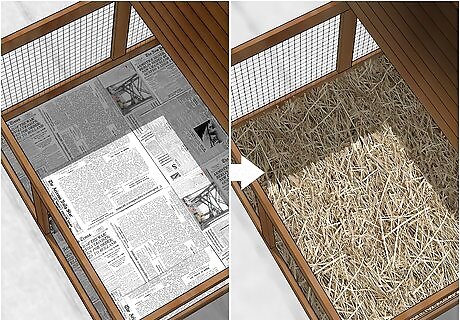
Line the inside of the hutch with bedding. A hutch that is placed directly on grass will only need bedding for the inside area. Line the bottom of the hutch with newspaper or puppy pads, and then your main bedding. Wood shavings topped with hay is a recommended bedding material to implement. These will help insulate the hutch for when it gets cold.
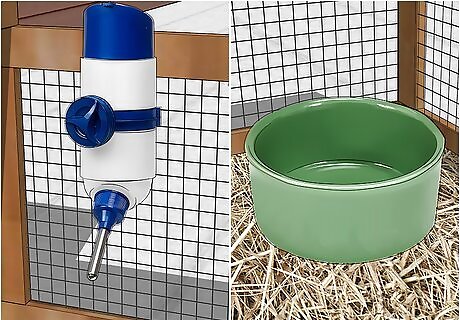
Install a water bottle. Your water bottle should be able to connect to the wire bars of the hutch. Position it correctly so that it's not too low or high. Keep the water bottle a short distance from the pellets to prevent mess. In case your water bottle leaks, place it outdoors to prevent it from soiling the bedding inside.
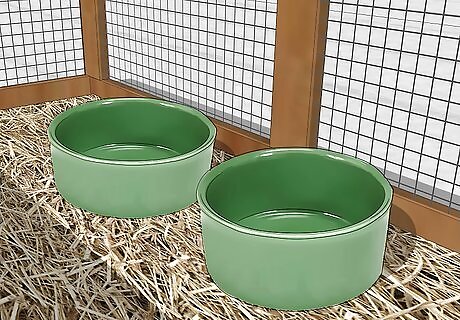
Set-up a feeding station. Place two or more feeding dishes in a part of the cage where it remains dry, such as underneath the ramp or inside the hutch. Keep the pellets away from the edges of the cage, as sudden rainy showers can spoil the unprotected food.

Place a few hideouts throughout the hutch. Because guinea pigs are skittish by nature, they are inclined to hide, especially in an outdoor hutch where many wild animals may scare them. You'll want at least one hideout per guinea pig and a neutral one to avoid conflict.
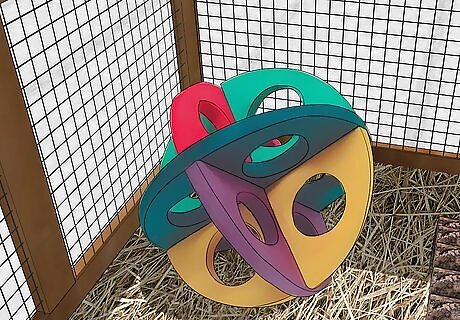
Add your toys and cage accessories. A spacious hutch will benefit with some toys to encourage play and enrichment. Avoid overcrowding the hutch with too many toys. You'll want to ensure your guinea pigs have some room to run about also. Keep most of their toys in the outside area of the hutch.
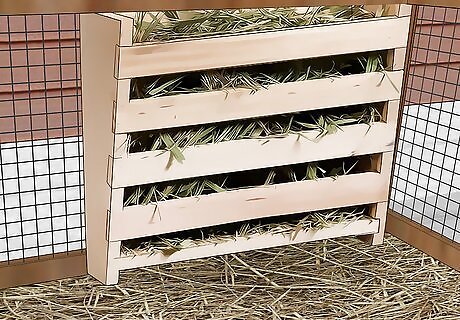
Attach an optional hay rack to the side of the cage. Most hay racks can be pitched up between the wires of the hutch. Keep the hay rack in a dry place, preferably inside the hutch or underneath the ramp. Hay-racks are not a replacement for free-feeding hay. Avoid metal hay racks, as guinea pigs can get their heads and bodies stuck through the metal bars.

Ensure the ramp is fully accessible. The ramp shouldn't be placed too steep in the hutch. Check the ramp to see if it has proper grip to prevent any slips or falls, like soft sandpaper or juts in the ramp structure. If your guinea pig is struggling to go up and down the ramp, you may need to make some adjustments.
Setting Up a Cubes and Coroplast Cage (C & C)
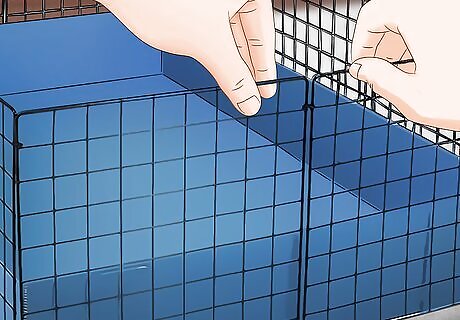
Assemble your C & C cage. Connect the grids by snapping them in place with grid connectors and then securing them with zip ties. Cut your coroplast to an appropriate size and tape the corners. Make sure the opening of the grids aren't big enough for your guinea pig to fit their head through. Less than a 1.5" opening is appropriate.Tip: The sides of your C & C cage must be at least 12” high. The top may be open, so long as other household pets do not have access to it.
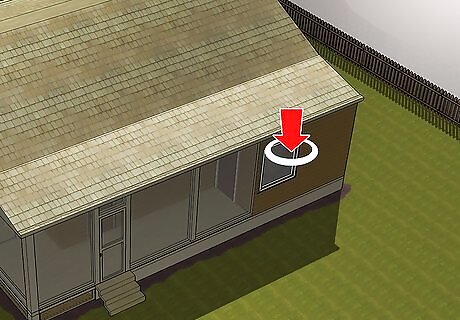
Place the C & C cage in a suitable location. Guinea pigs are susceptible to noise, temperature, and isolation. The ideal temperature for guinea pigs is approximately 65-75 degrees Fahrenheit. Place the C & C cage in a temperature controlled room away from heaters, air conditioning, drafts, and direct sunlight. Because guinea pigs have sensitive hearing, it's important to avoid placing your guinea pig's cage next to loud objects, such as a stereo or television set. Guinea pigs enjoy being near family activity and benefit from more attention when they’re easy to see and hear. A family room or living room is a suitable location to place a C & C cage, providing that other household pets cannot reach the cage. Guinea pigs don’t do well under humid conditions, such as a shed or garage. Dampness promotes the growth of mould in their hay and bedding and can make guinea pigs more prone to sickness.
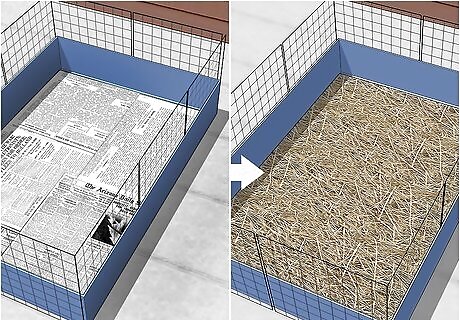
Fill the C & C cage with bedding. Line the base of the cage with newspaper or puppy pads, and then your main bedding. Fleece, CareFresh, and wood shavings are a few examples of bedding that are suitable for a C & C cage.
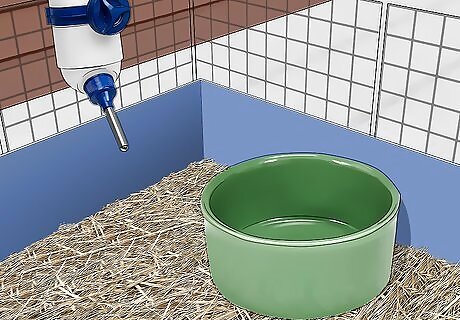
Install a water bottle. Your water bottle should be able to connect to the cube grids on the side of your C & C cage. Position it correctly so that it's not too high or low. Keep the water bottle a short distance from the pellets to prevent mess. In case your water bottle leaks, you can place a drip pad underneath to absorb the liquid.
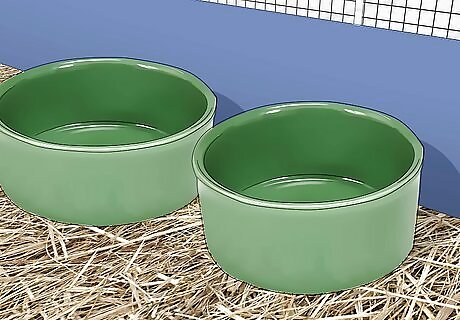
Set-up a feeding station. Place two or more feeding dishes in a spot where your guinea pig can easily access, preferably to the side of the cage.
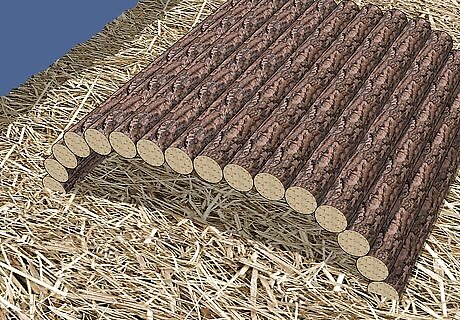
Place a few hideouts throughout the C & C cage. Because guinea pigs are skittish by nature, they are inclined to hide, especially in a C & C cage with an open lid. You'll want at least one hideout per guinea pig and a neutral one to avoid conflict.
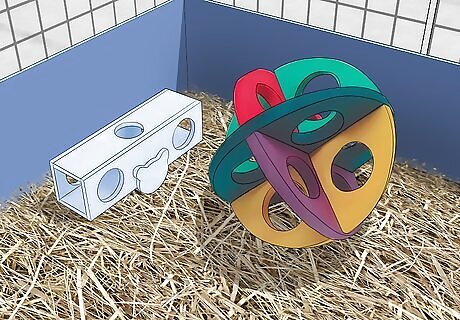
Add your toys and cage accessories. A spacious C & C cage will benefit with some toys to encourage play and enrichment. Avoid overcrowding the cage with too many toys. You'll want to ensure your guinea pigs have some room to run about also.
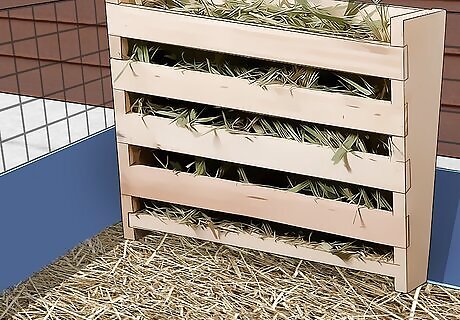
Attach an optional hay rack to the side of the C & C cage. Most hay racks can be pitched up between the wires of the connecting grids. Keep in mind that guinea pigs like to play with their hay. You should preferably keep the hay rack away from their food and water bowls to prevent mess. Hay-racks are not a replacement for free-feeding hay. Avoid metal hay racks, as guinea pigs can get their heads and bodies stuck through the metal bars.
Setting Up a Coop

Assemble your coop. Chicken coops are similar to guinea pig or rabbit hutches with the exception that they are slightly bigger. You can assemble them in the same manner. Coops are fairly easy to assemble providing you have the instructions and all the parts to it. You will likely need some tools to help assemble the coop.
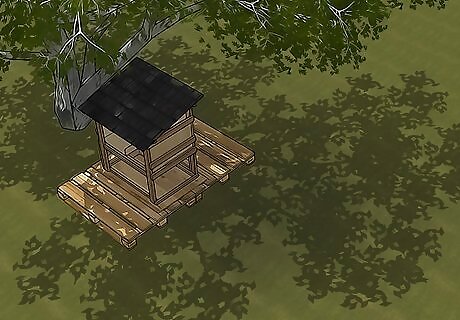
Place the coop in a suitable location. Anywhere that is visible and protected by weathering elements will suffice. Preferably, you should keep the coop out of direct sunlight in an area that is well-ventilated and secure from predators and other household pets. An example of a suitable location for a coop would be under a sheltered area, like a veranda. This way, your guinea pigs will be protected from the atmosphere and harsh weather. Guinea pigs don’t do well under humid conditions, such as a shed or garage. Dampness promotes the growth of mould in their hay and bedding and can make guinea pigs more prone to sickness.
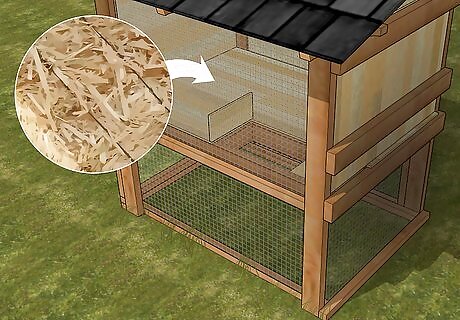
Line the inside of the coop with bedding. A coop that is placed directly on grass will only need bedding for the inside area, including the nesting boxes. Line the bottom of the coop with newspaper or puppy pads, and then your main bedding. Wood shavings topped with hay is a recommended bedding material to implement. These will help insulate the coop for when it gets cold.
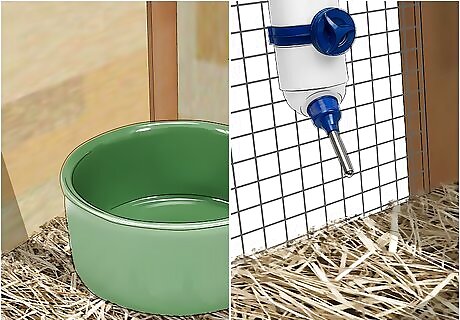
Install a water bottle. Your water bottle should be able to connect to the wire bars of the coop. Position it correctly so that it's not too low or high. Keep the water bottle a short distance from the pellets to prevent mess. In case your water bottle leaks, place it outdoors to prevent it from soiling the bedding inside.
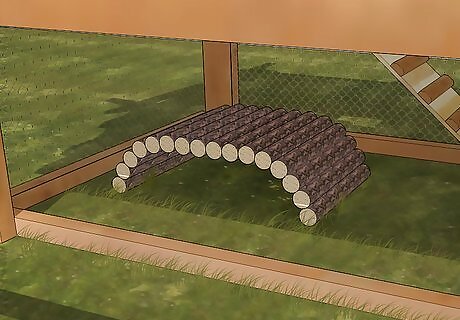
Place a few hideouts throughout the coop. Because guinea pigs are skittish by nature, they are inclined to hide, especially in an outdoor coop where many wild animals may scare them. You'll want at least one hideout per guinea pig and a neutral one to avoid conflict.
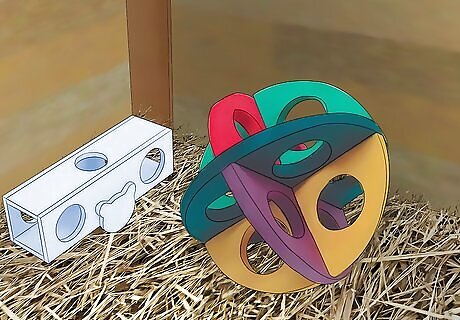
Add your toys and cage accessories. A spacious coop will benefit with some toys to encourage play and enrichment. Avoid overcrowding the coop with too many toys. You'll want to ensure your guinea pigs have some room to run about also. Keep most of their toys in the outside area of the coop.

Ensure the ramp is fully accessible. The ramp shouldn't be placed too steep and should feature proper grips, such as soft sandpaper or juts in the ramp structure. If your guinea pig is struggling to go up and down the ramp, you might need to make some adjustments as the ramp is designed for chickens rather than rodents.

Attach an optional hay rack to the side of the coop. Most hay racks can be pitched up between the wires of the coop. Keep the hay rack in a dry place, preferably inside the coop or underneath the ramp. Hay-racks are not a replacement for free-feeding hay. Avoid metal hay racks, as guinea pigs can get their heads and bodies stuck through the metal bars.
Setting Up a Wire Cage
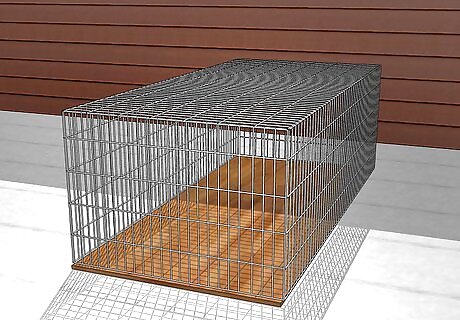
Assemble the wire cage. Wire cages are fairly easy to assemble, and most are sold pre-made. The sides of the cage should attach to each other using small clips.

Place the wire cage in a suitable location. Guinea pigs are susceptible to noise, temperature, and isolation. The ideal temperature for guinea pigs is approximately 65-75 degrees Fahrenheit. Place the wire cage in a temperature controlled room away from heaters, air conditioning, drafts, and direct sunlight. Because guinea pigs have sensitive hearing, it's important to avoid placing your guinea pig's cage next to loud objects, such as a stereo or television set. Guinea pigs enjoy being near family activity and benefit from more attention when they’re easy to see and hear. A family room or living room is a suitable location to place a wire cage, providing that other household pets cannot reach it. Guinea pigs don’t do well under humid conditions, such as a shed or garage. Dampness promotes the growth of mould in their hay and bedding and can make guinea pigs more prone to sickness.
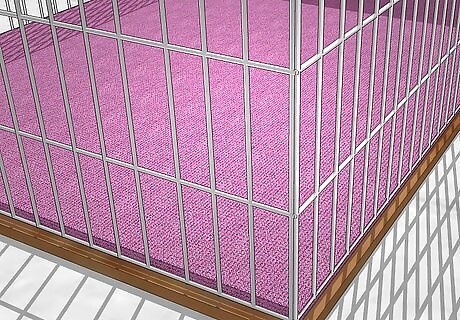
Fill the wire cage with bedding. Line the base of the cage with newspaper or puppy pads, and then your main bedding. Because a lot of wire cages do not have sides to hold loose material, fleece is a more suitable bedding option.
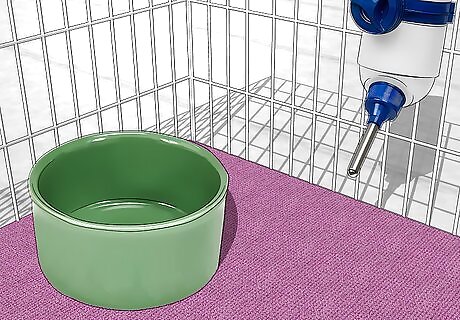
Install a water bottle. Your water bottle should be able to connect to the metal bars on the side of your wire cage. Position it correctly so that it's not too high or low. Keep the water bottle a short distance from the pellets to prevent mess. In case your water bottle leaks, you can place a drip pad underneath to absorb the liquid.
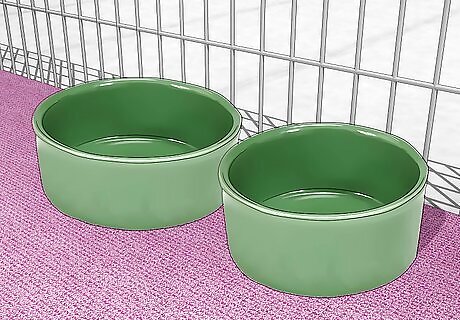
Set-up a feeding station. Place two or more feeding dishes in a spot where your guinea pig can easily access, preferably to the side of the cage.
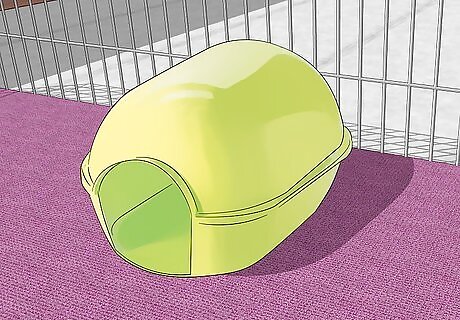
Place a few hideouts throughout the wire cage. Because guinea pigs are skittish by nature, they are inclined to hide, especially in a wire cage that is open by all sides. You'll want at least one hideout per guinea pig and a neutral one to avoid conflict.

Add your toys and cage accessories. A spacious wire cage will benefit with some toys to encourage play and enrichment. Avoid overcrowding the cage with too many toys. You'll want to ensure your guinea pigs have some room to run about also.
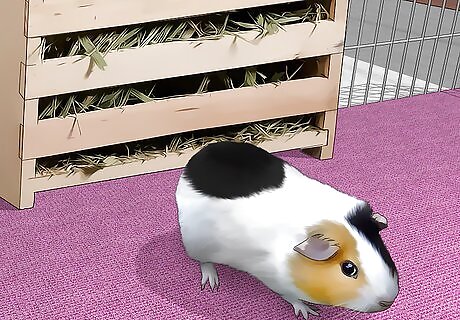
Attach an optional hay rack to the side of the wire cage. Most hay racks can be pitched up between the metal bars of the cage. Keep in mind that guinea pigs like to play with their hay. You should preferably keep the hay rack away from their food and water bowls to prevent mess. Hay-racks are not a replacement for free-feeding hay. Avoid metal hay racks, as guinea pigs can get their heads and bodies stuck through the metal bars.
Setting Up a Run
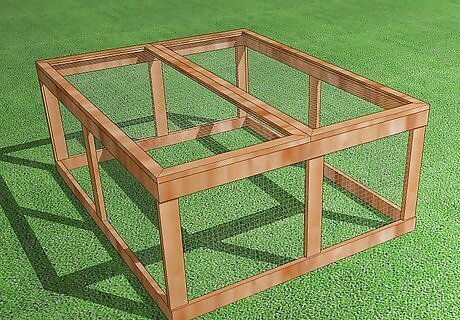
Assemble your guinea pig run. Runs are fairly easy to assemble providing you have the instructions and all the parts to it. You will likely need some tools to help assemble the run.
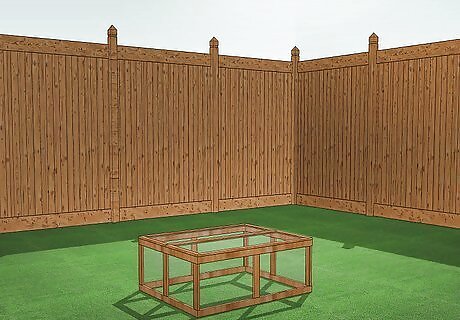
Place the run in a suitable location. Because guinea pig runs do not offer absolute protection or coverage from predators and harsh weather conditions, it's strongly advised to keep the run under an enclosed space outside of direct sunlight, such as a veranda. Ensure the area is well-ventilated and secure from predators and other household pets. Guinea pigs don’t do well under humid conditions, such as a shed or garage. Dampness promotes the growth of mould in their hay and bedding and can make guinea pigs more prone to sickness.
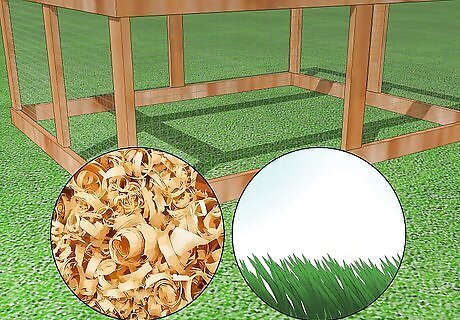
Line the run with bedding. Unless your run is sitting directly on grass, it will need to be lined with newspaper or puppy pads, and then an absorbent bedding, such as fleece or wood shavings.

Install a water bottle. Your water bottle should be able to connect to the wire bars of the run. Position it correctly so that it's not too low or high. Keep the water bottle a short distance from the pellets to prevent mess. In case your water bottle leaks, you can place a drip pad underneath to absorb the liquid.
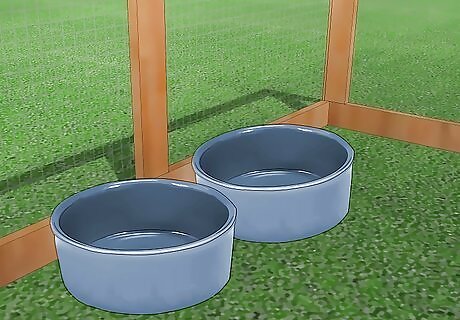
Set-up a feeding station. Place two or more feeding dishes in a spot where your guinea pig can easily access, preferably to the side of the run.
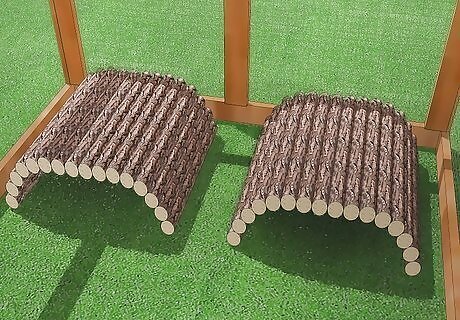
Place a few hideouts throughout the run. Because guinea pigs are skittish by nature, they are inclined to hide, especially in an outdoor run where many wild animals may scare them. You'll want at least one hideout per guinea pig and a neutral one to avoid conflict.
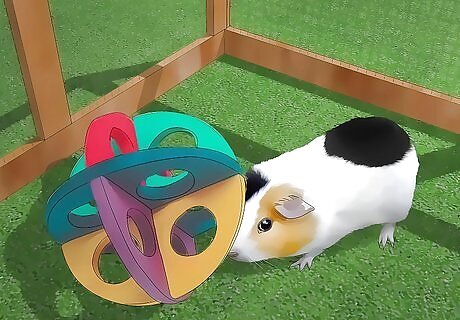
Add your toys and cage accessories. A spacious run will benefit with some toys to encourage play and enrichment. Avoid overcrowding the run with too many toys. You'll want to ensure your guinea pigs have some room to run about also.
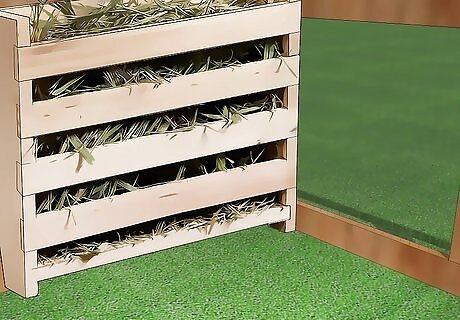
Attach an optional hay rack to the side of the run. Most hay racks can be pitched up between the wires of the run. Keep in mind that guinea pigs like to play with their hay. You should preferably keep the hay rack away from their food and water bowls to prevent mess. Hay-racks are not a replacement for free-feeding hay. Avoid metal hay racks, as guinea pigs can get their heads and bodies stuck through the metal bars.












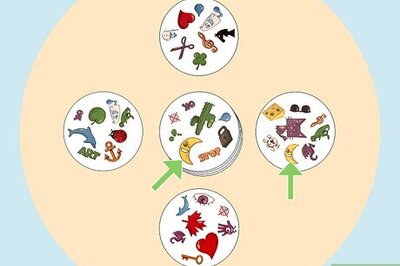







Comments
0 comment